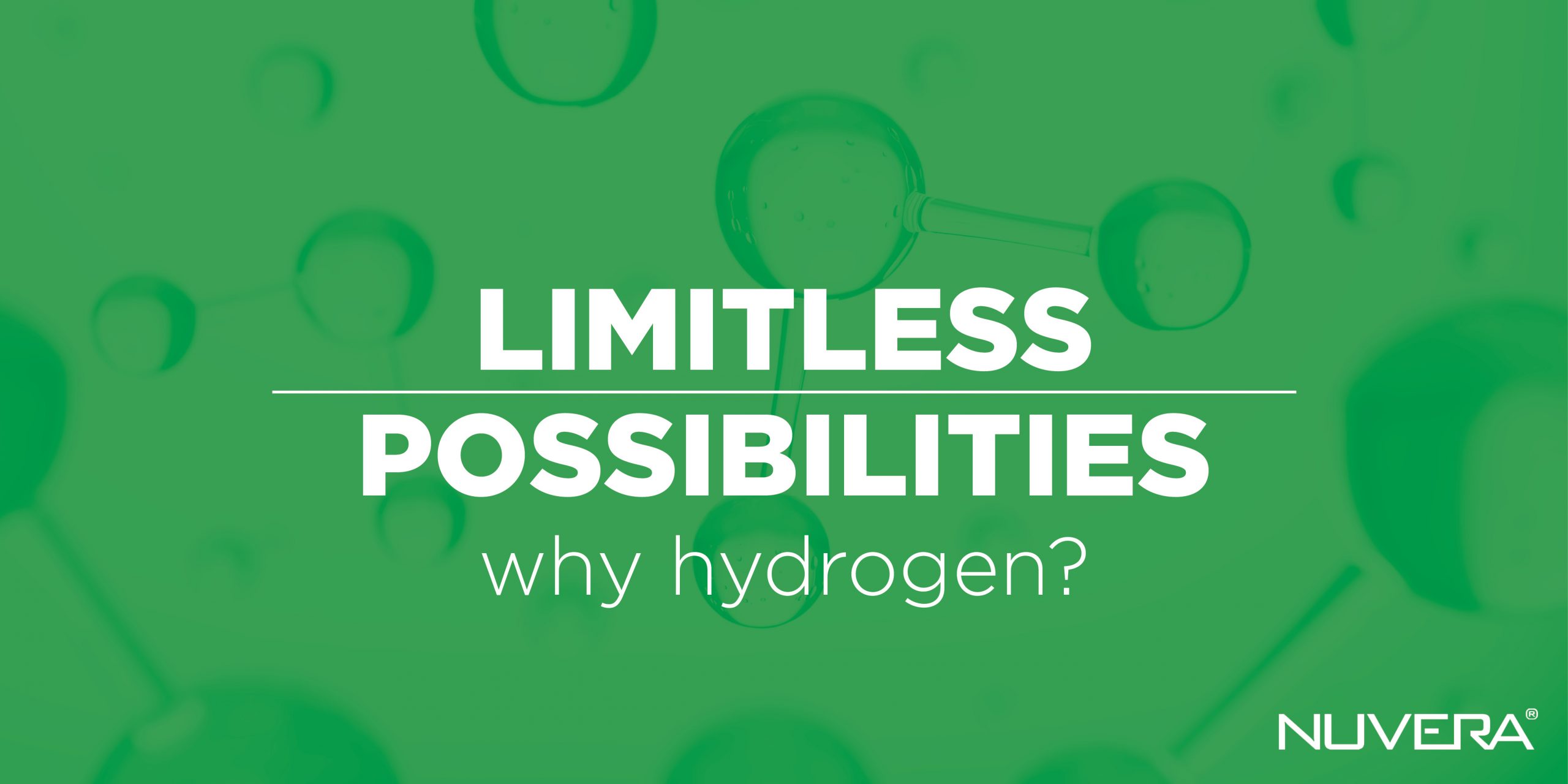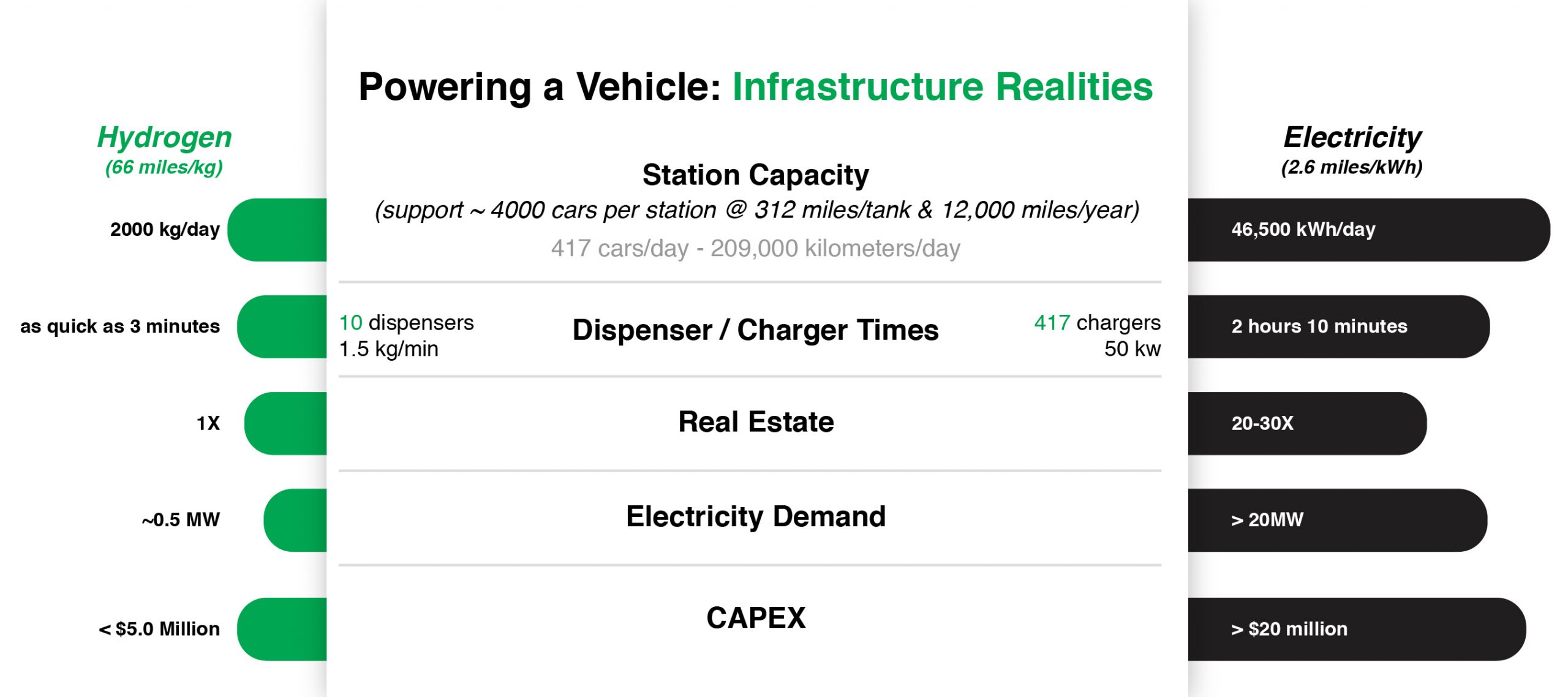
It’s the simplest chemical element. It can store and deliver usable energy. With just one proton and one electron, hydrogen comprises about 90 percent of the universe.
So why does this matter to us? We all need electricity, ideally an unlimited supply of electricity wherever we are, on demand. Electricity can be made from diverse feed stocks like fossil fuels, nuclear and renewable sources. It is used primarily for stationary applications such as electric power distributed through the grid to homes, businesses, factories, and other industrial facilities. But what about mobility and the needs of the transportation industry?
Hydrogen allows electricity to become conveniently portable.
Today, petroleum continues to be the dominant feedstock for transportation around the world because gasoline and diesel are energy-dense and easily carried. However, the fossil fuel era is coming to an end. Not only are coal, oil and natural gas becoming scarcer and more difficult to extract, but also their production and use are taking a tremendous toll on the environment.
Batteries store and transport electricity. Why do we need fuel cells?
Batteries work well for electronics and for vehicles that don’t require a large amount of power around the clock. But for many heavy-duty applications, long recharge times and low power density make battery use on industrial equipment, trucks, buses and automobiles limited or impractical.
Electrical energy carried in hydrogen can be stored, transported, and dispensed as needed – and then used to quickly fuel electric vehicles powered by fuel cells, without the charging time and infrastructure required for battery-powered cars. And the power density of fuel cell systems on a vehicle is an order of magnitude higher than on battery electric vehicles. The weight and space savings provided by fuel cells are especially important to delivery fleets, buses, and other commercial vehicles.
Clean Transportation Options Emerging Now
As adoption of electric and hybrid vehicles continues to grow, the limitations imposed by batteries are becoming more apparent. The “convenience penalty” ─ the time spent charging the battery divided by the time spent using it for its intended purpose ─ is costly for any type of electric vehicle in commercial service. Today’s best battery-charging technology is 20 times slower than gasoline or hydrogen refueling.
For gasoline automobiles, the convenience penalty is about 0.5 percent – you can drive a mid-size car for about 16 hours for the five minutes it takes to refuel.
For mid-size battery electric vehicles, the convenience penalty is 10 percent – often requiring at least two hours to fully recharge. And as vehicle size grows, so too does the convenience penalty.
Combine the comparatively slow charging time of the best superchargers with limited range determined by battery power density and other factors, and you face a significant reduction in mobility options for today’s vehicles.

Hydrogen Considers Mobility Needs
The case for hydrogen strengthens as motive fuel cell applications continue to proliferate. Compared with gasoline and diesel used in internal combustion engines, hydrogen significantly reduces fossil fuel reliance and greenhouse gas emissions, even when produced from natural gas, since the combined energy production and conversion process is so much more efficient. Renewable hydrogen, produced from biogas or solar/wind electrolysis, for example, provides an important and virtually limitless energy storage medium for mobility.
Seventy-seven percent of automotive industry executives in 43 countries predict that fuel cell vehicles will be the real breakthrough for electric drivetrains.[i]
So… why hydrogen? Why not! It’s simple chemistry.
![Nuvera_infograph_2-8-19-01[1]](https://www.nuvera.com/wp-content/uploads/2022/11/Nuvera_infograph_2-8-19-011-scaled.jpg)
[i] Global Automotive Executive Survey 2018, KPMG.
